All of this text comes from Olaus Petri, who was an eyewitness to the Stockholm Bloodbath. The text has been translated into modern Swedish and English according to ChatGPT. Please note that the text has not been verified and is based on Flemming's translation from 1860. The images are AI-generated and may contain historical inaccuracies.
https://sv.wikisource.org/wiki/Sida:Olai_Petri_Svenska_Kr%C3%B6nika_(Klemming_1860).pdf/338
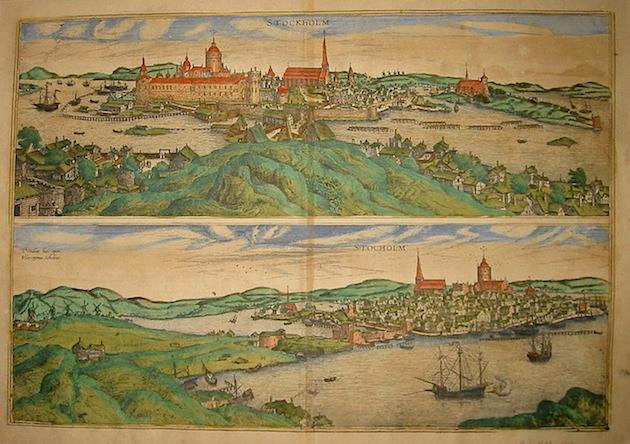
Christian entered Stockholm on September 7, 1520.
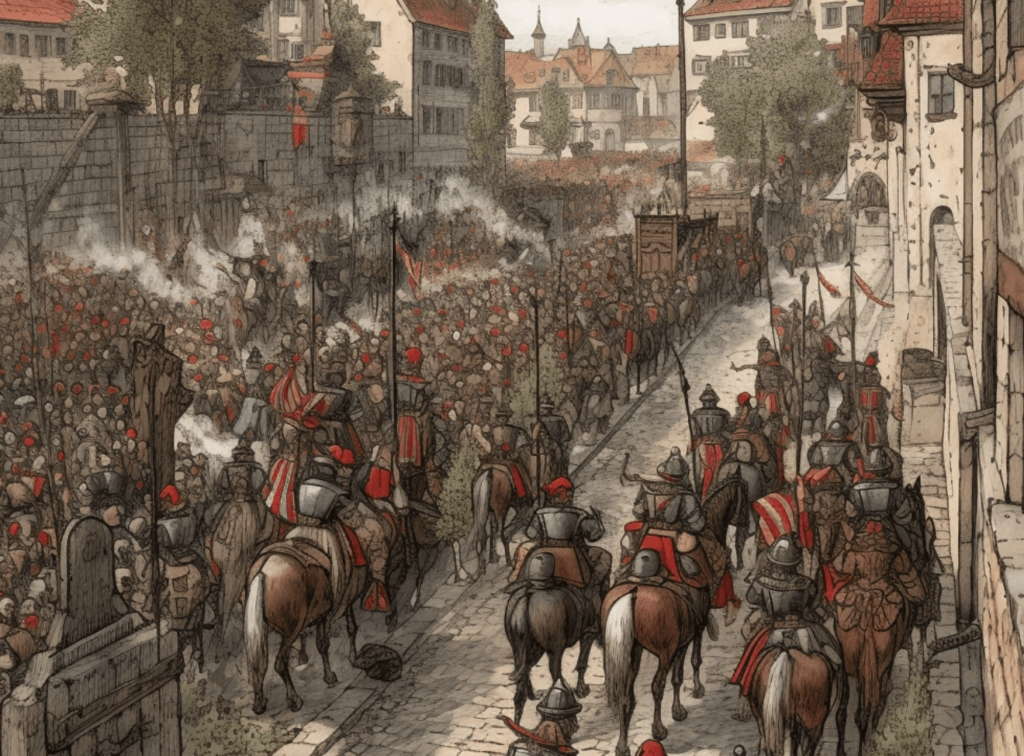
Now that everything was ordered and ready, which belonged to the king's entrance, the mayors went out to the southern field to meet him.
They handed over the city keys to him, and then he was taken in a procession, first to the village church, then to the castle, and then to the house of Gorius Holstes, where he stayed for a while. This entrance took place on the seventh day of the month of September, which is the eve of Mårmässan. The king had trumpets blown and announced peace.
He also immediately erected a gallows in Stortorget (the biggest square) and another one in Järntorget, and after a few days, he stationed Måns Jonsson in Stortorget. After appointing officials and giving orders as he pleased, he sailed to Denmark and returned shortly before the time of the holy mass.
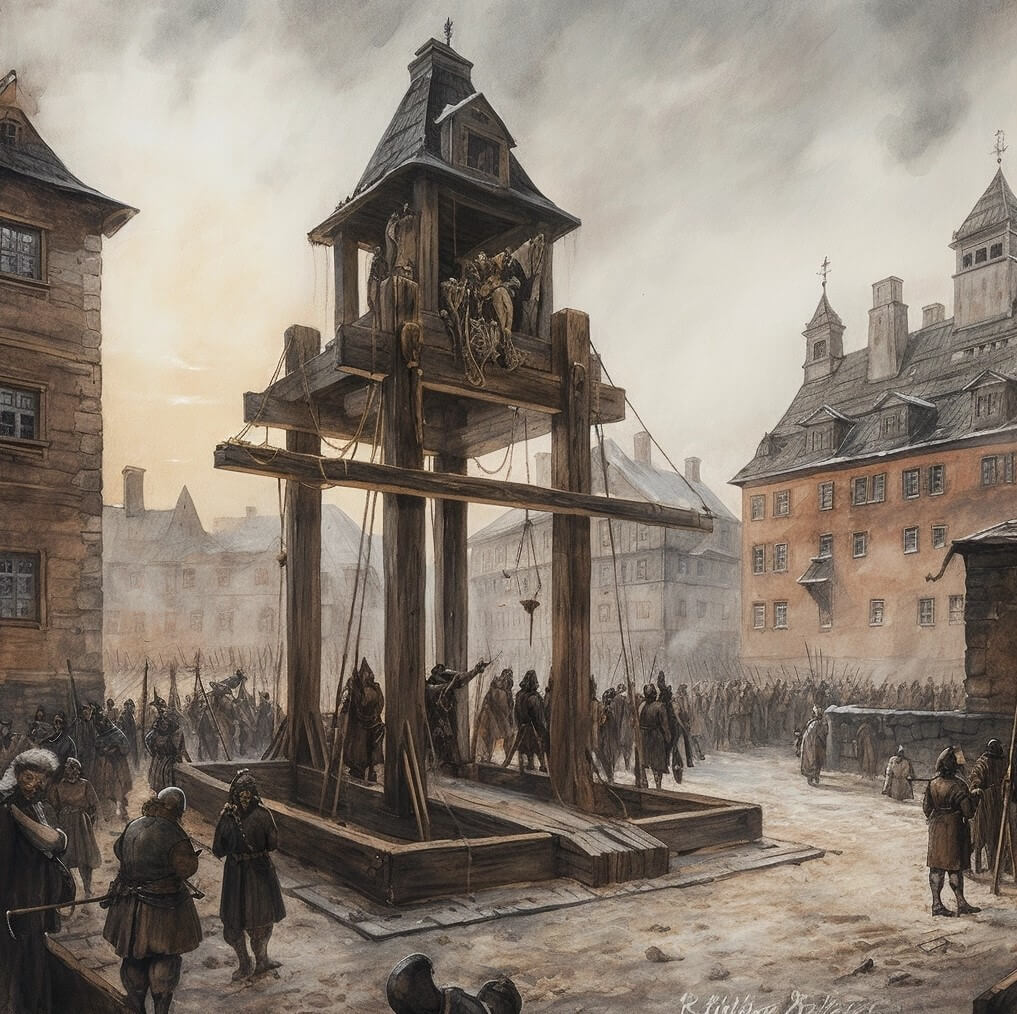
The entire nobility from the entire kingdom gathered in Stockholm, as well as some representatives from all the cities, mining districts, and the whole country. They arrived there on All Saints' Day, which happened to be on a Thursday, in the year of our Lord 1520. King Christian had built a fortress on Brunkaberget and called all those who had come from the entire kingdom to Stockholm, with all his army stationed down by the mountain. The bishop then presented a description of the entire kingdom and several letters of authorization from all the cities, mining districts, and parishes across the country.
Christian was hailed as the king of Sweden and was crowned
Christian was acclaimed as the king of Sweden and was crowned. Then Bishop Jöns Billenake from Fyn in Denmark presented the word to the Swedish people and went through his entire foundation, stating that King Christian had the rightful claim to the throne of Sweden. He had been crowned to it in his father's time and possessed the letter from the council of the realm as proof. Furthermore, he had the right to the kingdom according to Sweden's legal code, which contains what was also read aloud, that if the king has a son old enough to rule, he shall be next in the line of succession.
And Billenake defended his foundation in such a way that no one could rightfully argue against King Christian's legitimate annexation of the kingdom. But those who acted against him erred by attempting to deprive him of his rights, which did not belong to them. And he asked the common people if they were willing to acknowledge him as their lord and king, as long as he possessed such rights to the kingdom. And the answer was: Yes, we do.
Then they swore him allegiance, promised him obedience, and acknowledged everything that had been previously confirmed by letters and seals. But on the following Sunday, he was crowned by Archbishop Gustav and the other bishops in the village church of Stockholm.
Then he also took an oath and confirmed everything that had been previously affirmed, and received the sacrament in front of the high altar. When the mass and the ceremonies associated with the coronation were concluded, a throne was set up in front of the altar, where he then knighted Otto Krumpen, Claus Bille, Sören Norby, and several more of his captains and commanders.
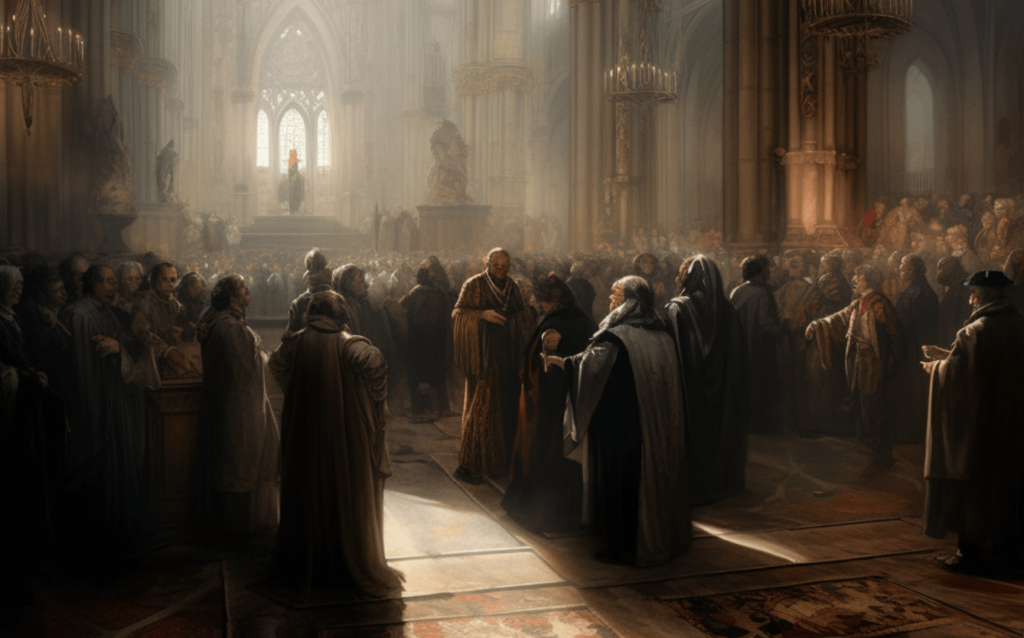
The king had it proclaimed and announced that he had not found a sufficient number of deserving Swedish men for such honors, but that he would do so on another occasion if there were any. When it was done, the king rose and remained standing by the altar.
Then Emperor Charles's herald was sent there. He arrived and stood opposite the king, delivering a speech to him in Latin. He also had a gold chain around both his hands with a gold brooch, and after delivering his speech, he placed the same chain around the king's neck, inducting him into the Burgundian League and promising him assistance and support from the entire league when needed.
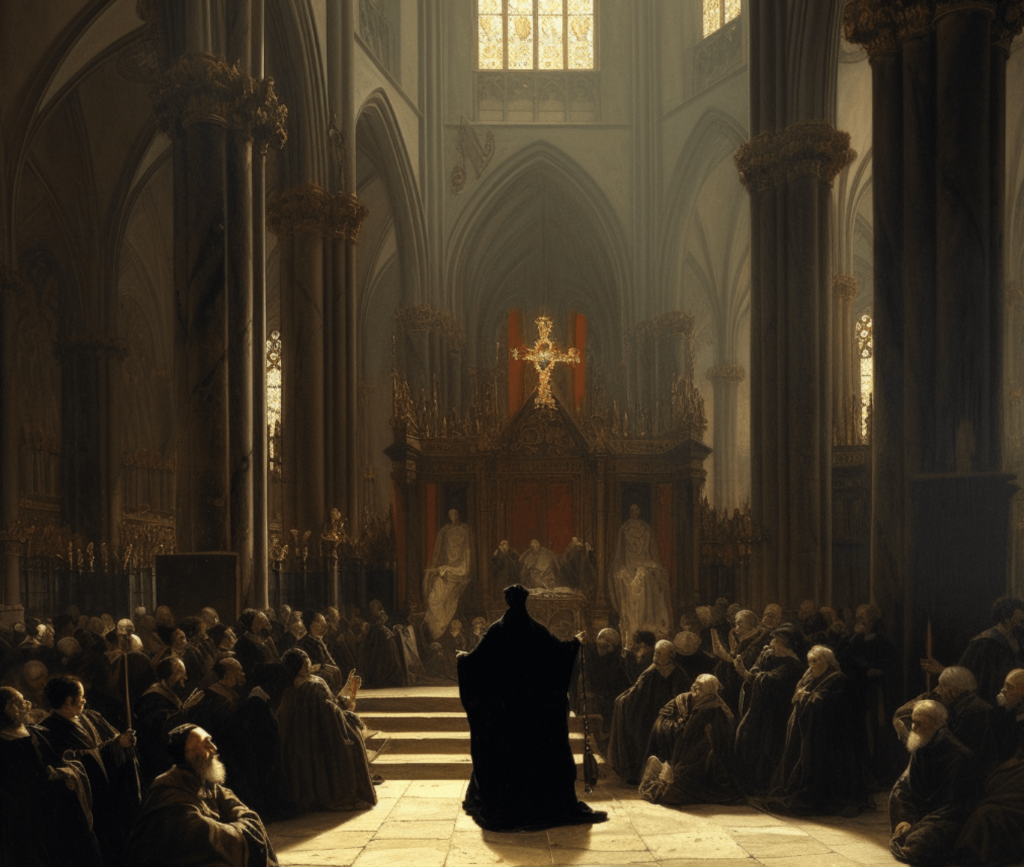
Archbishop Gustav Trolle lamented the abuse that had been inflicted upon him.
When everything that needed to be concluded in the church was finished, the king proceeded to the table and was accompanied by Swedes, Germans, and Danes, celebrating the festivity of his coronation for three days. Once the festivities were over, another banquet began on the following Wednesday. The king had gathered all the Swedish noblemen together with the Danish and German attendees in the grand hall of the castle.
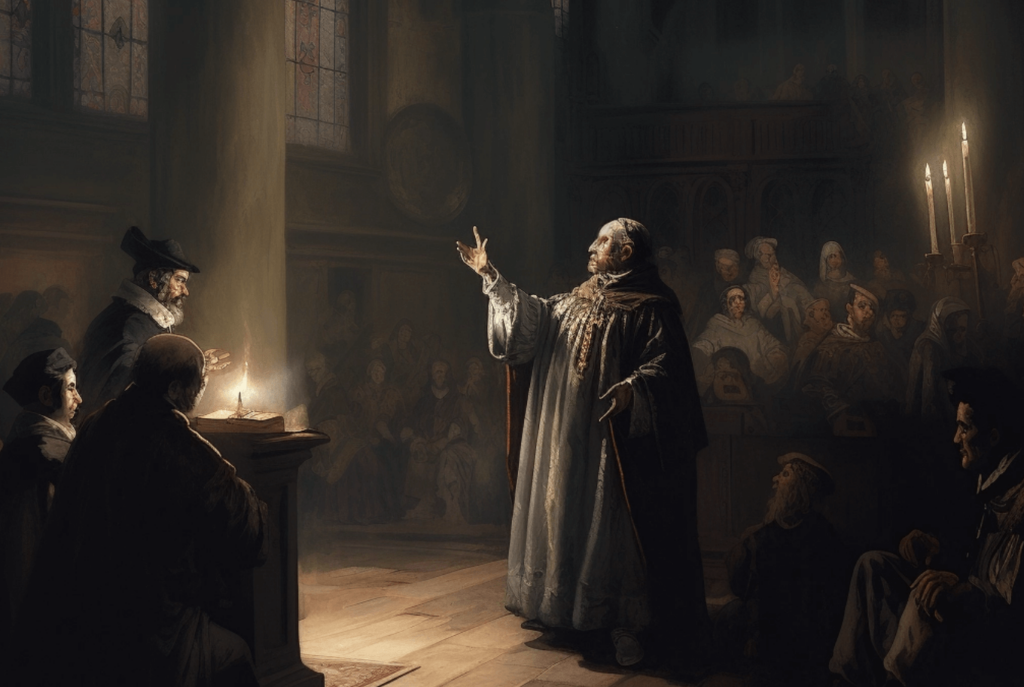
And he had arranged for Archbishop Gustav to step forward and begin to complain about the abuse that had previously been inflicted upon him by Lord Sten and his accomplices. When Saint Eric's Castle had been destroyed and significant damage had been caused to the sacred church properties. And his request was for Stäket to be rebuilt and for all his damages to be compensated, the harm he had suffered. His complaints were justified in nature.
But the king, who had avoided addressing this matter, had different plans in mind to push through these complaints than the archbishop could imagine, as he sought many people's lives through it. And since the archbishop was not as concerned about their lives as he complained about, the king became dissatisfied with him and subsequently punished him with harsh words, causing the archbishop to become afraid.
When such complaints were presented, Lady Kristina, the surviving widow of Lord Sten, came under harsh scrutiny. She presented the letter that had been issued, stating that Stäket would be demolished and that Gustav Trolle would never be recognized as archbishop again. All those who had issued the letter had also sworn together to defend each other, suffer, and support one another no matter what might happen. Based on this assurance, the king decided to consider them all as traitors because they had sealed the letter. And since Bishop Hans' seal from Linköping was also among them, he claimed to have been coerced and forced into sealing it and thus was acquitted.
Many of the Swedish men were beheaded
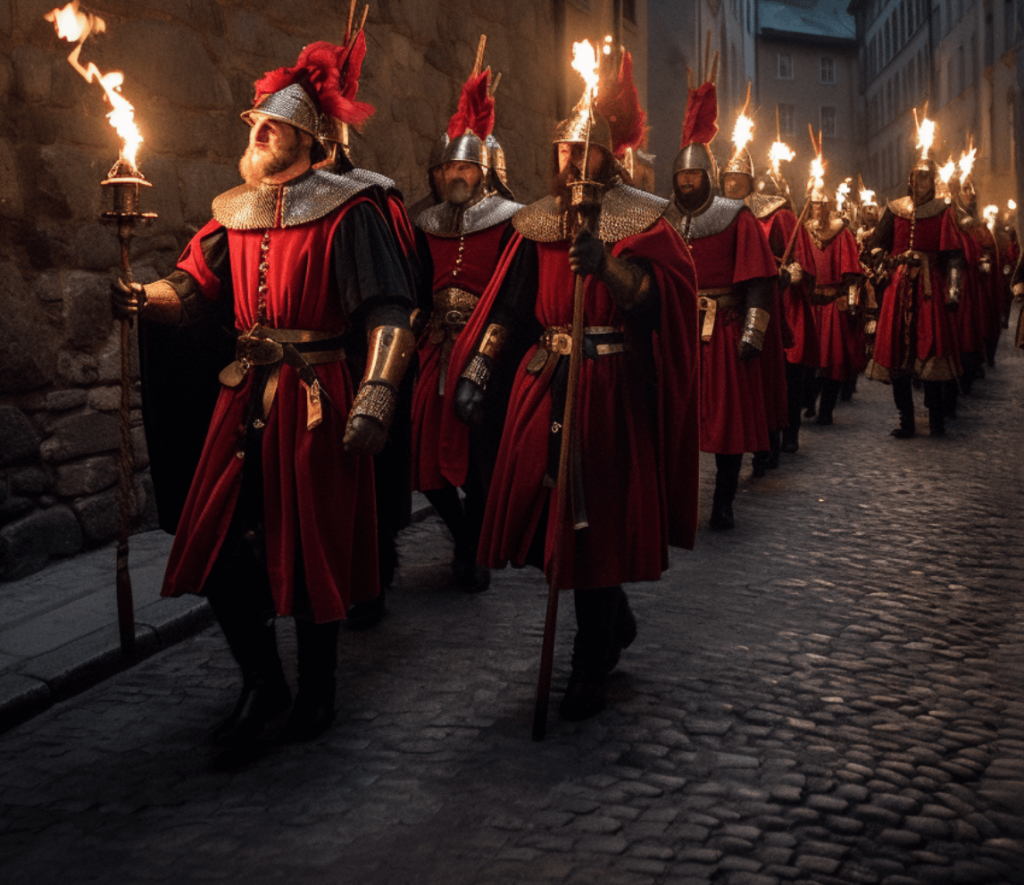
But Bishop Vincentius in Skara and Bishop Matts in Strängnäs, along with many of the Swedish noblemen, their servants, and the citizens of Stockholm, were apprehended and imprisoned. Some were held in the tower, others in the chapel, and some in other parts of the castle, where they spent the night. Then the Uppsala ting and all the confirmation letters sent from Denmark were forgotten, as were all the promises and obligations he had given earlier on the day of Pentecost when he himself arrived in Stockholm with his fleet. Yes, everything was forgotten that had been promised during the king's homage and coronation in those days, including the reception of the Holy Communion.
The next morning, the eighth day after All Saints' Day, the king had the trumpets blown and declared that no one should leave their homes, but everyone should remain where they were. At midday, he had the Bishop of Skara and the Bishop of Strängnäs, along with knights, their men, and the citizens he had arrested, brought to the main square for execution.
When they had come out to the square and stood there in a circle, some of the king's advisors stood on a balcony. Niels Lycka addressed the people on the square and urged them not to be frightened by the punishment taking place there. He stated that His Royal Majesty (as he said) had solemnly ordered and demanded such punishments from Archbishop Gustav, who had knelt three times and pleaded and requested that the injustice he had suffered be punished. He presented many other arguments to justify the king's actions. Then, in front of everyone, Bishop Vincentius shouted that he was not speaking the truth, but that his king acted with lies and treachery against the Swedish men.
He demanded that the others should also receive a verdict for themselves and know how they would die, and he expressed strong words against the king, stating that God would avenge such atrocities and injustices.
Bishops, knights, and mayors were beheaded. In the same manner, Anders Ruth and Anders Karlson also shouted, where they stood in the circle, urging the Swedish men to consider their harm and not be betrayed by false letters and proceedings, as had now occurred, and that they should seek revenge for such tyrannical acts if they could, and they shouted even towards the heavens.
Bishops, knights, and mayors were beheaded.
Then Bishop Matts of Strängnäs was executed in front of the town hall, and his head was placed between his legs, which did not happen to any of the others. Among the Swedish men who appeared at the assembly, no one had accommodated King Christian's desires as much as Bishop Matts, and if it had not been impossible for the king to carry out his will in the kingdom, Bishop Matts would not have preceded him.
Then Bishop Vincentius was beheaded, followed by Sir Erik Abrahamson, then Erik Knutsson, then Sir Erik Johansson, and thereafter Erik Ryning, Sir Erik Nilsson, Eskil Nilsson, Joakim Bragde, Måns Green, Erik Kuse, Olof Björnsson, Gunnar Galle, and Bengt Ericsson.
And then the mayors, and they are as follows: first, three mayors, Jöns Gudmundsson, Anders Olafsson, and Anders Henricsson. Then the following councilmen: Olof Hanson, Måns Budde, Baggans Björn, Anders Ruth, Anders Karlson, Michel Nilsson, Knut Öning, Erik Helsing, Peder Ericsson, Åsmund, Matts Crona, Jakob Pedersson, Nils Birgerson, and Hemming Grönskalle. From the general public, those who are notable: Henrik Stråbock, Lambert Båding, Hans Weser, Simon the tailor, Långe Nils, Peder Staffansson, Pål the tanner, Gudmund the tanner, Erik the blacksmith, Peder Budde, Anders the butcher, Matts the cooper, Nils Mattsson, Lambert the shipmaster, and Lasse Hass. These and a few more were executed on the first day.
Many more were beheaded in Stockholm in 1520
But the day after, Kättil the scribe was beheaded along with six or eight others. Their lifeless bodies remained on the square from Thursday until Saturday. It was a sorrowful and distressing sight, with blood mixing with water and filth, as is customary, flowing down the gutters. Yes, it was a terrible and cruel massacre, such that never before has anyone bearing the Christian name been involved in such dreadful events, where someone deliberately and intentionally proceeded to let so many people be killed without any justice according to their own oaths, letters, and seals.
And King Kristian not only killed them in body but also, to the extent possible for him, their souls when they unexpectedly met their death. No clerk could instruct them to save their souls, so these open murderers, thieves, and robbers would end up in extreme torment. Even though their bodies may have been destroyed, their souls could still be preserved, but King Kristian did not have that intention. Instead, he wanted to destroy both life and soul, giving them no opportunity to contemplate anything before their death.
Instead, he had a large number of them taken from their homes where they were working, unsuspecting of any harm, and brought directly to the square where their heads were severed. This happened to Lambert the Boatman as he stood shaving and was apprehended and taken to the square. It also happened to Lasse Hass, who stood among the king's soldiers on the square, witnessing the executions of others and shedding tears over it. For this reason, he was pulled into the circle and beheaded.
Sten Sture's lifeless body was burned along with the others
And, in short, all of them met their fate unprepared, as no justice preceded it, as it should have. To kill both life and soul is a horrendous act of murder when one contemplates it. Subsequently, the king ordered a large fire to be lit on Saturday at Södermalm and had the lifeless bodies dragged out and burned. He also had Sten Sture's lifeless body, which had been lying in the ground for over half a year, along with an infant, unearthed and burned together with the others. Sir Morten Jonson, a prebendary in Stockholm, had previously been unearthed by the archbishop's arrangement. Now, all of them were burned as traitors, for they had resisted the archbishop and consented to the destruction of his castle.
But King Kristian did not consider them traitors when they hailed him as their king. Neither were Bishop Vincentius and Bishop Matts regarded as traitors when they crowned him alongside the archbishop, yet they were to be burned as traitors. However, God has not forgotten such deeds.
When the burghers were then beheaded, all the keys were taken from their wives, and from there, gold jewelry, silver, money, and all the finest possessions were seized as confiscated goods, even though no justice was served and the wives were supposed to keep the houses as their share. And after the previous execution, many were beheaded, among them Olof Walram and Erland Esbjörnsson.
But those who hung on the gallows in the main square day after day couldn't be properly counted, as the gallows were often full and sometimes empty. And those who were hanged were primarily the servants of the noblemen who had been beheaded, and many were hanged with their boots and spurs that they had ridden into the city with, which was quite horrifying.
Many were beheaded in Finland and other places.
When such cruel murders had occurred in Stockholm, King Christian had given orders for the same to happen in Finland. There, Sir Åke Öriansson, Tönne Ericson, Niels Eskilson, and Hemming Gadd were beheaded, along with many others. Furthermore, he captured Lady Kristin and some other noblewomen and sent them to Denmark. King Christian increasingly began to show his intentions of turning the Swedes into his own slaves, Estonians, and hucksters, and he proclaimed that no peasant should be allowed to possess worthy weapons or crossbows. Sometimes, he would seize them from the peasants and cut them into pieces, something he carefully considered doing throughout the entire kingdom. He also had Sweden's legal code in mind, in which he believed he had the right.
As he was a bloodthirsty lord, he had such bailiffs, some who shared his views, among them were Master Diderik the High, Jöns Mattsson, Claes Holst, and several others, who also had the desire to see Swedish blood flow. Anders Persson, who was the bailiff in Örebro, went there where they lived and freed them from him.
It became a saying among the king's people that the Swedish peasant could plow with one hand and a wooden leg. And many such words were used at that time, as most people are familiar with. And their courtiers, who had been beheaded, did not dare to rise up, only Sören Norby was their refuge. Now that the bishoprics of Skara and Strängnäs were vacant, the king sent Master Didrik to Skara and Bishop Bellenacke to Strängnäs as bishops, both remarkable men who proved themselves well suited for such positions through their actions.
Kristian went to Denmark and erected gallows in every town.
When King Christian had arranged everything in Stockholm with offices and officials according to his will, he prepared himself to travel across the country and back to Denmark. And wherever he would arrive in the cities, gallows were erected in the squares.
There, Claes Holst was the captain first. He himself was hanged in Söderköping according to the king's order on the gallows he had caused to be erected. Along with him, his own scribe and one of his servants were hanged in Linköping and one in Västervik. Then the king arrived in Linköping and held his court there.
Then he arrived in Västervik and had Sven Höök and Peder Smed quartered there. And when he arrived in Jönköping, he had Lindorm Ribbing and several others beheaded there. In particular, he had two children from Ribbing's family beheaded, one around eight years old and the other four or six years old. After that, he arrived at Nydala Abbey, where he paid so much for lodging that he had the abbot drowned along with some of his brothers. Finally, he returned to Denmark. And this journey from Stockholm to Denmark was such that every city he arrived in had to sacrifice someone. So that any sensible person could understand that he would be a torment for the Swedish people and a punishment that God wanted to inflict on them. But praised be God forever, who has thrown this punishment into the fire.



